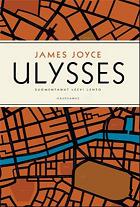Ministers, Excellencies, Ladies and Gentlemen,
A little more than one year ago the General Assembly took the step of adopting its first resolution on mediation and today we are very pleased to be here to welcome the UN Guidance for Effective Mediation. This guidance is the result of a consultative process, which has brought together states, civil society, mediators and academics from all over the world.
I would like to thank all those who have actively participated in the process. However, we should not stop our efforts now. The Guidance is meant to assist to mediate more effectively and help mediators to use more cohesive and complementary approaches. Therefore we need to raise the awareness about the Guidance and start implementing it swiftly.
And how can we achieve this? Firstly, we can disseminate the guidance as widely as possible. Secondly, we can organize training sessions and use the guidance as a common tool. Thirdly, when interventions on mediation are considered, the guidance can be used as a basic document. And lastly, we should cooperate with civil society in order to further develop and implement the guidance.
It is of utmost importance that the guidance is applied, further developed and updated. Therefore it needs to be a living document, which will guide us in different and often complex conflicts.
The Guidance states that “At worst, competition and disagreement over strategy and funding have permitted parties to forum-shop therefore hampering peace efforts.” We should avoid this. Collaboration and partnership among different actors involved in mediation is vital especially in a conflict zone. We should be conscious of the confusing and potentially even damaging consequences of uncoordinated mediation initiatives.
The field of mediation has become more complex and even somewhat crowded. At their best, mediating actors have grouped behind a lead mediator, based on a common strategy, and employed their comparative advantages to maximum effect. Even in a situation like this the results have not always been good. In many instances, conflicts have been further aggravated by well-meaning third-party actors who lack a good understanding of mediation and adequate preparation.
A solid grasp of mediation is needed to better synchronize diplomatic efforts and manage expectations. To this end, the Guidance for Effective Mediation is a useful resource and as Mr. Lakhdar Brahimi, says about Syria: ”It will only be effective if all pull in the same direction”. The UN Guidance for Effective Mediation is an example how UN can work together. It is something we have to continue to enhance.
I would like to mention that in addition to the UN Guidance for Effective Mediation, the Department of Political Affairs has also published the Guidance for Mediators, Addressing Conflict-Related Sexual Violence in Ceasefire and Peace Agreements, which is very useful publication and which can be used in complex conflicts complementing the Guidance. However, especially when we speak about mediation, we should see women in conflicts not only as victims, but more as active actors. Although in the Guidance women are often mentioned, their potential in making a difference in peace processes and negotiations could have been further pursued.
Women’s voice and participation bring a priceless ingredient to the peace table, leading to more successful and more lasting resolution of conflict. Therefore, it is important to identify and prepare qualified female mediators. Women’s participation is vital both in resolving the crisis and in making sure that women’s interests are addressed in peace agreements. In conflict resolution, women’s participation and gender expertise provide a firm foundation for women’s post conflict participation.
I would like to come back to the beginning of my speech and indicate again that the Guidance for Effective Mediation is an excellent tool: let us now make full use of it.
Thank You.

